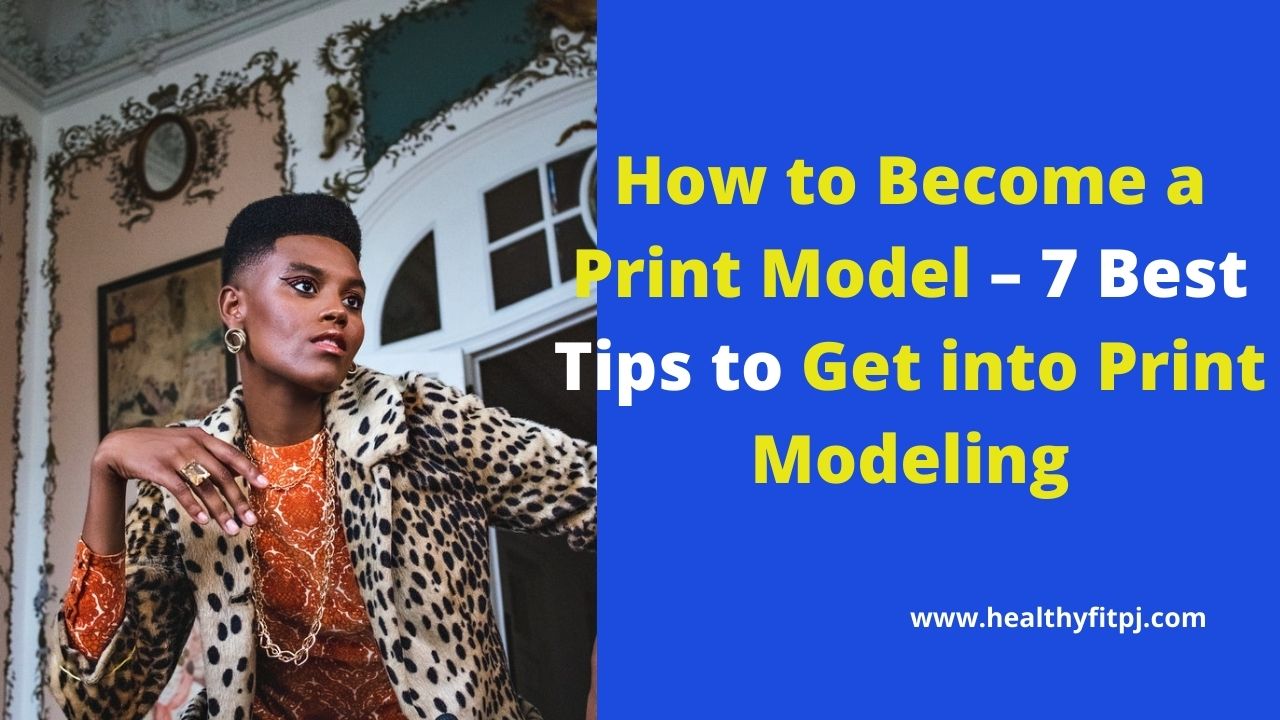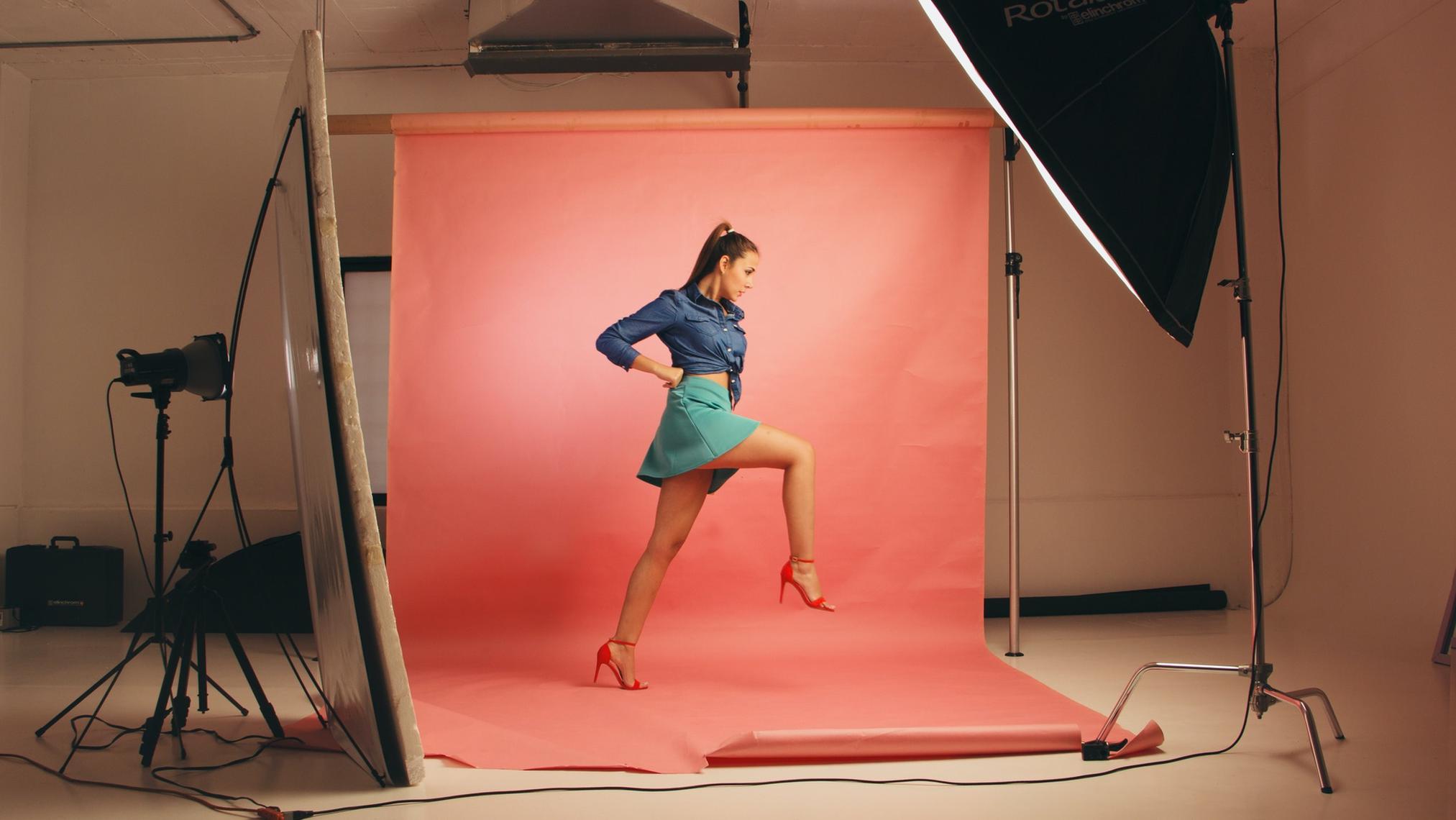How to become a print model – Embark on a captivating journey into the world of print modeling, where beauty and artistry intertwine. This comprehensive guide will unveil the secrets to becoming a successful print model, empowering you with the knowledge and strategies to make your modeling dreams a reality.
From understanding the industry’s demands to mastering the art of posing and expression, we’ll explore every aspect of print modeling, equipping you with the tools to navigate this competitive field and achieve your aspirations.
Modeling Industry Overview
The print modeling industry is a thriving and competitive sector of the fashion and advertising industries. It involves models posing for still images used in magazines, newspapers, billboards, and other printed materials.
The industry has undergone significant changes in recent years, with the rise of digital media and the increasing diversity of models. However, print modeling remains an important part of the fashion and advertising landscape, and there is a continued demand for talented and professional models.
Types of Print Modeling Jobs
There are various types of print modeling jobs available, each with its unique requirements and challenges.
- Fashion Modeling:This type of modeling involves posing for clothing and accessories in fashion magazines, catalogs, and advertisements.
- Commercial Modeling:Commercial models promote products and services in advertisements, such as food, beverages, and electronics.
- Beauty Modeling:Beauty models showcase cosmetics, skincare products, and hairstyles in magazines, advertisements, and packaging.
- Fitness Modeling:Fitness models demonstrate fitness products and workout routines in magazines, catalogs, and advertisements.
- Editorial Modeling:Editorial models appear in fashion editorials and magazine spreads that focus on fashion trends and inspiration.
Physical Requirements

Print models must meet certain physical requirements to be successful in the industry. These requirements include:
- Height: Print models typically need to be at least 5’9″ (175 cm) tall for women and 6’0″ (183 cm) tall for men.
- Weight: Print models should be proportionate and have a healthy weight for their height.
- Body Shape: Print models should have a lean and athletic body shape with well-defined muscles.
- Skin: Print models should have clear and blemish-free skin.
- Hair: Print models should have healthy, well-groomed hair.
- Eyes: Print models should have bright and expressive eyes.
- Teeth: Print models should have a healthy and attractive smile.
To maintain a healthy lifestyle for modeling, print models should:
- Eat a healthy diet that is rich in fruits, vegetables, and whole grains.
- Exercise regularly to stay in shape.
- Get enough sleep.
- Manage stress levels.
- Avoid smoking and excessive alcohol consumption.
Building a Portfolio
Creating a strong print modeling portfolio is essential for showcasing your skills and attracting potential clients. Here are some tips to consider:Professional photography and editing are crucial for a polished and captivating portfolio. Hire an experienced photographer who specializes in print modeling and can capture your best angles and expressions.
Invest in high-quality editing to enhance the images and ensure they meet industry standards.
Portfolio Content
Your portfolio should include a diverse range of images that demonstrate your versatility and range as a model. Include shots that showcase your facial features, body proportions, and ability to convey different emotions and expressions. Consider incorporating images from both studio and outdoor settings, and experiment with different lighting and backgrounds.
Portfolio Presentation
Present your portfolio in a professional and organized manner. Create a physical portfolio that is easy to navigate and showcases your best work. You can also create an online portfolio website or utilize platforms like Model Mayhem to reach a wider audience.
Keep your portfolio updated regularly with new images and remove any outdated or irrelevant content.
Networking and Marketing: How To Become A Print Model
Networking and marketing are crucial for print models seeking success in the industry. By establishing connections and implementing effective marketing strategies, models can increase their visibility, secure more bookings, and build a lasting career.
Networking with Casting Directors and Agents
* Attend industry events:Attend fashion shows, industry parties, and workshops to meet casting directors, agents, and other industry professionals.
Reach out directly
Contact casting directors and agents via email or social media to introduce yourself and express your interest in working with them.
Build relationships
Maintain regular communication with contacts, attend their events, and support their work to foster lasting relationships.
Effective Marketing Strategies for Print Models
* Create a strong online presence:Establish a professional website and social media profiles that showcase your portfolio, promote your brand, and connect with potential clients.
Optimize your portfolio
Ensure your portfolio is well-organized, up-to-date, and tailored to the specific niches you are targeting.
Use social media to promote yourself
Share behind-the-scenes photos, updates on your career, and engage with followers to build your online following and reach a wider audience.
Collaborate with brands
Partner with brands and businesses that align with your image and values to create mutually beneficial collaborations.
Casting Calls and Auditions

Casting calls and auditions are essential opportunities for aspiring print models to showcase their skills and secure modeling jobs. These events allow models to meet with casting directors and agents, present their portfolios, and demonstrate their abilities.
To find casting calls, models can consult online resources such as Model Mayhem and Backstage, or attend industry events and workshops. It is crucial to prepare thoroughly for auditions by practicing posing, researching the brand or client, and dressing appropriately.
Professional Presentation
- Arrive on time and be punctual for auditions.
- Dress professionally and appropriately for the specific casting call.
- Be polite and respectful to everyone involved in the audition process.
- Maintain a positive and confident attitude throughout the audition.
- Be prepared to take direction and follow instructions from the casting director.
Working with Clients
Establishing a strong rapport with clients is crucial for success as a print model. By fostering a professional and reliable image, you can build lasting relationships that will benefit your career.
Maintaining a professional demeanor and punctuality is essential. Arrive on time for appointments, respond promptly to emails and messages, and always conduct yourself in a courteous and respectful manner.
Building Relationships
- Communicate effectively and clearly, ensuring that both parties are on the same page.
- Be adaptable and willing to accommodate client requests within reason.
- Provide excellent customer service, going the extra mile to meet and exceed expectations.
- Seek feedback and be open to constructive criticism to improve your performance.
Business Management

Financial management is crucial for print models to ensure financial stability and success in their careers.
Expenses and Taxes
Print models incur various expenses, including:
- Agency fees
- Travel expenses
- Clothing and accessories
- Photography and editing
- Marketing and promotion
It’s essential to manage expenses wisely and keep accurate records for tax purposes.
Income from print modeling is subject to income tax, and expenses can be deducted to reduce taxable income.
Maximizing Income
To maximize income, print models should:
- Negotiate favorable contracts
- Build a strong portfolio and online presence
- Network with industry professionals
- Diversify income streams through endorsements or other projects
Financial Resources
- Accountants:Assist with tax preparation and financial management.
- Financial advisors:Provide guidance on investments and financial planning.
- Modeling agencies:May offer financial advice or assistance.
Financial Considerations Table
| Financial Aspect | Key Considerations |
|---|---|
| Expenses | Track and manage expenses for tax deductions. |
| Taxes | Understand tax implications and consult with a professional. |
| Income Maximization | Negotiate contracts, build a portfolio, and diversify income streams. |
| Financial Resources | Seek guidance from accountants, financial advisors, or modeling agencies. |
Health and Wellness

Maintaining good mental and physical health is crucial for print models. Their appearance and overall well-being are directly tied to their health.
Nutrition
A healthy diet is essential for maintaining a fit physique and radiant skin. Models should focus on consuming nutrient-rich foods such as fruits, vegetables, whole grains, and lean protein. They should limit processed foods, sugary drinks, and unhealthy fats.
Exercise
Regular exercise is vital for staying in shape and boosting energy levels. Models should incorporate a variety of exercises into their routine, including cardiovascular activities, strength training, and flexibility exercises.
Sleep
Getting enough sleep is essential for both physical and mental health. Models should aim for 7-9 hours of sleep each night to ensure their bodies and minds are well-rested.
To become a print model, you need to understand the basics of print concepts, such as composition, lighting, and color theory. What are print concepts guide you through the process of creating visually appealing images that will captivate your audience.
With a solid understanding of these concepts, you’ll be well on your way to becoming a successful print model.
Stress Management
The modeling industry can be stressful, so it’s important for models to find healthy ways to manage stress. Techniques such as yoga, meditation, and spending time in nature can help reduce stress levels and promote relaxation.
Mental Health
Mental health plays a significant role in physical appearance. Stress, anxiety, and depression can manifest in physical symptoms such as skin problems, weight gain, and hair loss. Models should prioritize their mental health and seek professional help if needed.
“Mental health is just as important as physical health. Models who take care of their mental well-being are more likely to have a successful and fulfilling career.”Dr. Amy Banks, psychologist specializing in the modeling industry
Ethical Considerations
In the world of print modeling, adhering to ethical guidelines is paramount. Models must respect client wishes, maintain privacy, and ensure informed consent, particularly when working with minors. Upholding professional standards and avoiding exploitation is essential.
Respecting Client Wishes and Maintaining Privacy, How to become a print model
Models are obligated to respect the wishes of their clients. This includes adhering to dress code specifications, following instructions during shoots, and maintaining confidentiality about any sensitive information they may encounter.
Informed Consent and Protection of Minors
Obtaining informed consent is crucial, especially when working with minors. Parents or guardians must be present and provide written consent before a minor can participate in a shoot. Models must also ensure that minors are protected from any potential harm or exploitation.
Professional Standards and Avoiding Exploitation
Models have a responsibility to uphold professional standards. This includes being punctual, prepared, and respectful on set. They must also avoid engaging in any activities that could exploit themselves or others.
Ethical Dilemmas in Print Modeling
Models may face ethical dilemmas, such as being asked to pose in revealing or provocative clothing. Navigating these situations requires careful consideration and communication with the client. Models should prioritize their own comfort and well-being while also respecting the client’s vision.
Social Media and Cyberbullying
Social media has amplified the potential for cyberbullying and harassment in the industry. Models must be aware of the risks and take steps to protect themselves, such as setting boundaries and reporting any inappropriate behavior.
Industry Organizations and Regulations
Industry organizations and regulations play a vital role in promoting ethical practices. They establish guidelines, provide support, and enforce standards to ensure the well-being and fair treatment of models.
Best Practices for Ethical Conduct
For models, ethical conduct includes respecting contracts, maintaining confidentiality, and avoiding conflicts of interest. Photographers should obtain informed consent, create a safe and respectful environment, and adhere to industry standards.
Consequences of Unethical Behavior
Unethical behavior can have severe consequences, including damage to reputation, loss of work, and legal action. Accountability is essential for maintaining the integrity of the industry.
10. Advanced Techniques
Print modeling involves more than just standing in front of a camera and striking a pose. Advanced techniques elevate a model’s performance, allowing them to convey emotions and create visually compelling images.
Posing Techniques
Advanced posing techniques enhance the visual impact of an image. They include:
Contraposto
Positioning the body in a twisted or curved manner to create a sense of movement and depth.
Negative Space
Using the empty space around the model to draw attention to specific body parts or convey a particular mood.
Leading Lines
Creating a visual path through the image using the model’s body or props, guiding the viewer’s eye.
Facial Expressions
Facial expressions play a crucial role in conveying emotions and connecting with the audience. Advanced techniques include:
Micro Expressions
Subtle changes in facial muscles that convey specific emotions, such as joy, sadness, or anger.
Eye Contact
Establishing eye contact with the camera or the viewer creates a sense of intimacy and draws the viewer into the image.
Emotional Intensity
The pursuit of a career as a print model entails a rigorous process of portfolio building, networking, and honing one’s craft. Understanding the intricacies of printing costs is also crucial, as it pertains to the reproduction of portfolios and promotional materials.
Information on printing costs at libraries can provide valuable insights for aspiring print models seeking cost-effective solutions for their printing needs, enabling them to optimize their resources and maximize their chances of success in the competitive modeling industry.
Varying the intensity of facial expressions to match the desired mood of the shoot.
Props and Lighting
Props and lighting can significantly enhance the story or message of an image.
Props
Symbolic Props
Using objects that represent specific concepts or ideas, such as a flower to symbolize beauty or a book to symbolize knowledge.
Compositional Props
Arranging props in a way that complements the model’s pose and creates a balanced image.
Lighting
Natural Lighting
Utilizing sunlight to create soft, flattering effects, often used for outdoor shoots.
Artificial Lighting
Using studio lights to control the direction, intensity, and color of light, creating specific moods and atmospheres.
Backlighting
Placing the light source behind the model to create a silhouette or emphasize the model’s form.
Case Studies
Analyzing the career paths and strategies of successful print models can provide valuable insights into the key factors that contribute to success in the industry. By examining case studies of these models, aspiring models can gain a better understanding of the skills, knowledge, and networking strategies that are essential for building a successful career.
One notable case study is that of Kate Moss, who rose to prominence in the 1990s and became one of the most iconic print models of all time. Moss’s unique androgynous look and her ability to embody a wide range of styles and concepts made her a favorite of fashion photographers and designers.
Her success was also attributed to her strong work ethic and her ability to connect with audiences on a personal level.
Networking and Marketing
Another successful print model is Naomi Campbell, who has been a leading figure in the industry for over three decades. Campbell’s success can be attributed to her exceptional networking skills and her ability to build strong relationships with industry professionals.
She has also been a vocal advocate for diversity and inclusion in the fashion industry.
Unique Skills and Industry Knowledge
In addition to networking and marketing, successful print models also possess unique skills and industry knowledge that set them apart from their peers. These skills may include the ability to pose effectively, to understand different lighting techniques, and to work well with photographers and stylists.
Industry knowledge is also crucial, as it allows models to stay up-to-date on the latest trends and to understand the business side of the industry.
Training and Education

Formal training and education provide numerous benefits for print models, enhancing their technical skills, boosting their confidence and professionalism, and granting them access to industry resources and connections.
Types of Training Programs
Various training programs cater to the needs of aspiring and experienced print models:
- Workshops and seminars:Short-term programs that focus on specific aspects of modeling, such as posing, makeup, and wardrobe.
- Online courses:Flexible and convenient options that offer a range of topics, from beginner basics to advanced techniques.
- Apprenticeships:Hands-on training opportunities that allow models to work alongside experienced professionals.
- Degree programs:Comprehensive programs that provide a solid foundation in modeling, including technical skills, business management, and industry knowledge.
Continuing Education and Professional Development
To maintain a competitive edge, print models must continuously update their skills and knowledge. This includes staying abreast of industry trends, expanding their portfolio, and seeking professional development opportunities, such as workshops, seminars, and conferences.
Social Media and Online Presence

In today’s digital age, social media has become an indispensable tool for print models. It provides a platform for models to showcase their work, connect with potential clients, and build a strong online presence.
To build a strong online presence, print models should:
- Create a professional website or online portfolio that showcases their best work.
- Use social media platforms such as Instagram, Twitter, and Facebook to share their photos, videos, and updates.
- Engage with their followers by responding to comments, asking questions, and running contests.
- Use social media to connect with potential clients and book jobs.
Examples of Successful Print Models Who Have Used Social Media to Their Advantage
- Ashley Graham
- Gigi Hadid
- Kendall Jenner
These models have all used social media to build a strong online presence and connect with potential clients. They have used their platforms to share their work, promote their brands, and book jobs.
User Queries
What physical requirements are essential for print models?
Print models typically require a slim and toned physique, with symmetrical features and clear skin. Height and weight requirements vary depending on the specific modeling niche.
How do I create a strong print modeling portfolio?
Invest in professional photography that showcases your best angles and poses. Edit your images carefully to enhance your features and create a cohesive portfolio that represents your unique style.
What is the best way to network with casting directors and agents?
Attend industry events, join modeling agencies, and reach out to casting directors and agents directly. Build relationships and stay persistent in your efforts to get noticed.


